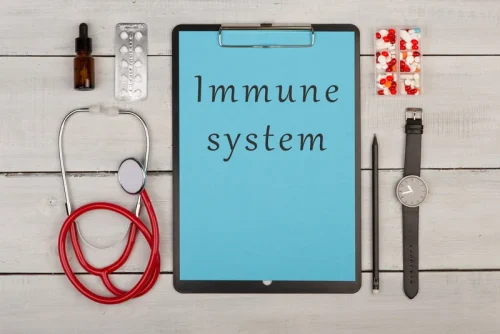Does Alcohol Thin Your Blood? Effects and Impact

While you’re taking Pradaxa, it’s harder for your blood to clot and form a scab. You may have a higher risk for bleeding if you’re taking another medication that also increases the risk of bleeding. Blood clotting, or coagulation, an important physiological process that ensures the integrity of the vascular system, involves the platelets, or thrombocytes,4 as well as several proteins dissolved in the plasma. When a blood vessel is injured, platelets are attracted to the site of the injury, where they aggregate to form a temporary plug. The platelets secrete several proteins (i.e., clotting factors) that—together with other proteins either secreted by surrounding tissue cells or present in the blood—initiate a chain of events that results in the formation of fibrin. Fibrin is a stringy protein that forms a tight mesh in the injured vessel; blood cells become trapped in this mesh, thereby plugging the wound.

Drugs & Supplements
- Pradaxa is approved to reduce the risk of stroke and blood clots in people with nonvalvular atrial fibrillation (A-fib).
- In cardiomyocyte mitochondria as well as other mitochondrial types, such imbalances could lead to further decreases in cellular respiration and oxidative phosphorylation.
- As you get older, the risk of bleeding or stroke occurring while taking Pradaxa increases.
- In addition, alcohol ingestion itself may accelerate the development of folic acid deficiency by altering the absorption of folic acid from food.
However, a high-fat meal has no effect on the bioavailability of Pradaxa. The FDA website provides several useful tips on medication disposal. You can also ask your pharmacist for information on how to dispose of your medication. You should store Pradaxa capsules at room temperature, between 68°F and 77°F (20°C to 25°C) in their original container away from light. Avoid storing this medication in areas where it could get damp or wet, such as in bathrooms.
- However, the risk of VTEs in women with AI remained higher than non-AI cohort.
- For example, an increase in the average RBC volume (i.e., the mean corpuscular volume [MCV]) is characteristic for a certain type of anemia.
- In most cases, the surgeon will make a cut in the area above the blood clot.
- The platelets secrete several proteins (i.e., clotting factors) that—together with other proteins either secreted by surrounding tissue cells or present in the blood—initiate a chain of events that results in the formation of fibrin.
- This may involve wearing stockings that improve your blood flow or taking medicine to reduce the risk of clots (anticoagulants).
Is it safe?
- Platelets also release proteins called clotting factors that form a plug to close the hole.
- Alcohol may affect various mechanisms implicated in ischemic preconditioning.
- • Liver damage – too much alcohol can cause damage to the liver and prevent it producing substances that help your blood to clot.
- Several population studies show a progressive inverse relationship between CAD-related deaths and the amount of alcohol consumption; that is, the rate of CAD deaths declines steadily with increasing alcohol intake.
Cross-sectional studies seek a correlation between reported alcohol use and blood pressure; prospective studies follow subjects over time to document the development of increased blood pressure in relation to reported alcohol use. Of the more than 50 cross-sectional and 10 prospective population studies, almost all have demonstrated a link between alcohol and hypertension in nonhospitalized persons in a number of countries (Klatsky blood thinners and alcohol 1995b). Studies differ about whether a threshold of alcohol consumption exists below which the hypertensive effect does not occur. The preponderance of evidence suggests that clinically significant hypertension is related only to heavier drinking. The characterization of drinking levels is complicated by the use of subjects’ self-reported estimates. In particular, heavier drinkers may underestimate their alcohol consumption.
- People who develop a blood clot in one of the deep veins in the arms and legs, called deep vein thrombosis (DVT), may go on to experience postthrombotic syndrome (PTS).
- Through the process of oxidative phosphorylation, the mitochondria generate ~90 percent of cellular ATP.
- Pradaxa works by decreasing your body’s ability to form a blood clot.
- This is an irregular heartbeat that starts in the upper chambers of your heart.
How to take Pradaxa
Using more than the recommended dosage of Pradaxa can lead to serious side effects. Because this medication makes it harder for your blood to clot, taking too much can make you bleed and be very serious. No, you don’t have to have your blood tested regularly while taking Pradaxa. Unlike other blood-thinning medications, such as warfarin, your doctor doesn’t typically need to monitor your blood levels during your Pradaxa treatment. In these studies, people took either warfarin or Pradaxa after being treated for 5 to 10 days with an anticoagulant in injection form. This study showed that the people who took Pradaxa had a 1.60% risk of major bleeding, compared with a 1.21% risk in people who took Eliquis.
Does Alcohol Affect Deep Vein Thrombosis?
Your doctor may prescribe a blood thinner to help prevent heart attacks and strokes if you are at risk. The review authors highlighted that previous research has suggested drinking significant amounts of alcohol every day has links to a higher risk of developing high blood pressure. They also discussed studies that indicated higher levels of alcohol consumption have associations with an increased risk of stroke, atrial fibrillation, and heart failure. Drinking alcohol in moderation may have a protective effect on your blood vessels. Some research finds that alcohol increases levels of high-density lipoproteins (HDL, aka “good cholesterol”).
Alcoholic Cardiomyopathy

Drinking a glass or two of wine each day might reduce your risk for heart disease and strokes caused by blockages in blood vessels (ischemic strokes) in much the same way that taking a daily aspirin can prevent strokes. People with A-fib may have heart palpitations (feeling of skipped or extra heartbeats), a fast heart rate, or feel tired or short of breath. If you have A-fib , you’re at an increased risk for developing a blood clot or having a heart attack or stroke. Because Pradaxa stops your blood from clotting easily, you may be at an increased risk of bleeding if you have surgery while taking the medication.
International Patients
You may want to discuss these medications with a healthcare professional if you have certain risk factors for developing a blood clot. Clinicians and researchers have long recognized that alcohol consumption can directly damage heart muscle cells independently of any other cardiovascular effect (Klatsky 1995a). Breathlessness and fatigue may be early signs of such heart muscle disease (i.e., cardiomyopathy). Complications may develop as the disease progresses, including heart failure, embolism, and arrhythmias, possibly resulting in sudden death.
Alcohol’s Effects on Blood Pressure and Incident Hypertension
A J-shaped relationship for females showed protective effects at or below consumption levels of 15 g/day (Taylor et al. 2009). These data highlight how gender may be an important modifier of the alcohol threshold level and can shape the alcohol benefit–risk relationship. Doctors warn people who are taking Aggrenox to moderate their alcohol consumption.

